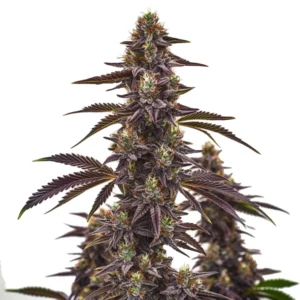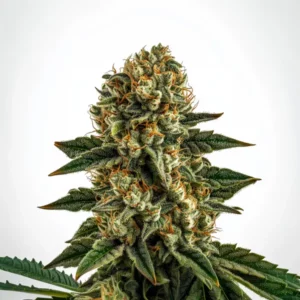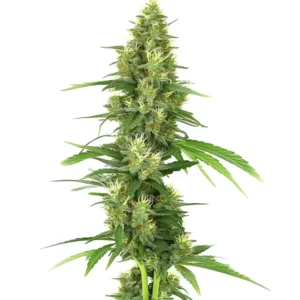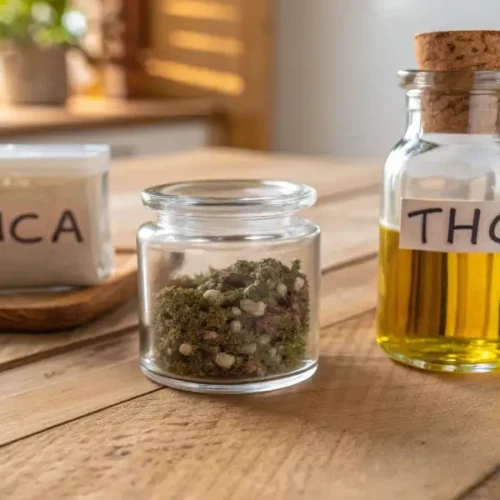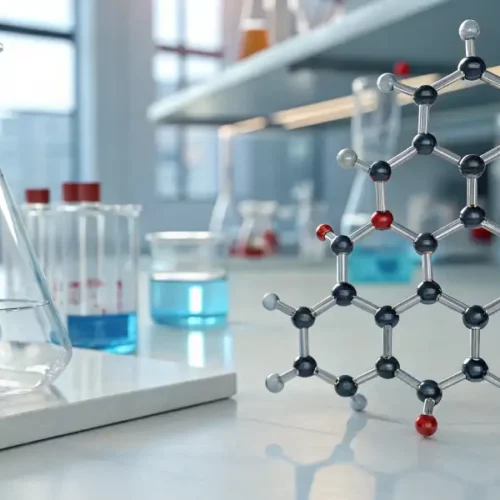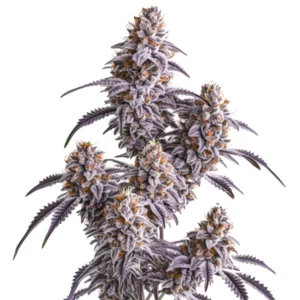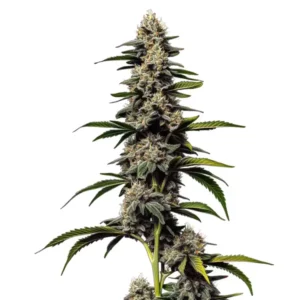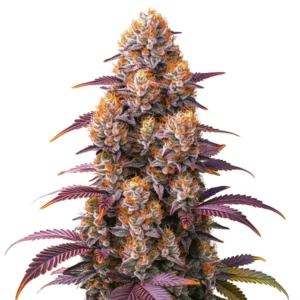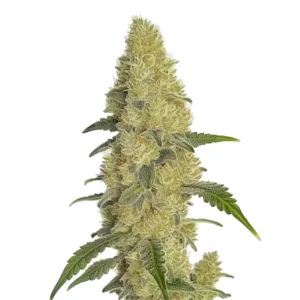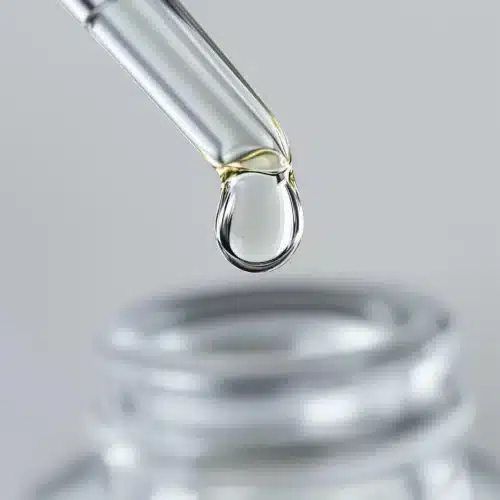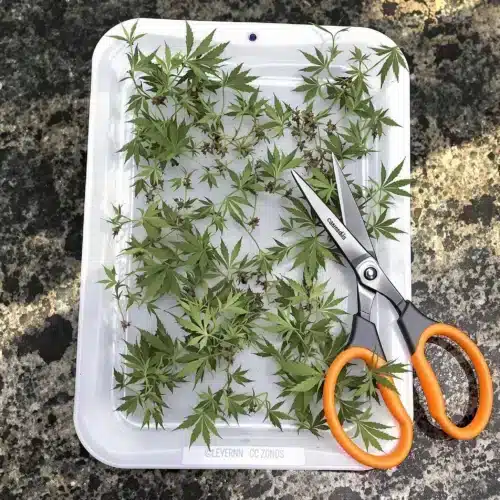What is THCA and How Does it Relate to THC?
The cannabis plant contains various cannabinoids, each contributing unique properties to its effects and benefits. THCA, or tetrahydrocannabinolic acid, is one of these cannabinoids, found primarily in raw or live cannabis plants. Unlike THC (tetrahydrocannabinol), THCA is non-psychoactive, meaning it does not produce the “high” effect associated with cannabis use. However, when cannabis is exposed to heat through smoking, vaporizing, or cooking, THCA undergoes a transformation into THC, activating its psychoactive effects—this process is commonly referred to as the THCA to THC conversion rate, a key factor in understanding cannabis potency.
This conversion process is of great interest to both medicinal and recreational cannabis users, especially for those researching how much THC in THCA can be expected after decarboxylation. By analyzing the relationship between THCA and THC, consumers and cultivators can better predict and control the outcomes of cannabis products, optimizing them for their intended uses.
Why THCA to THC Conversion Matters
For those using cannabis therapeutically or recreationally, the THCA-to-THC conversion rate is essential to achieve desired effects. THCA, though beneficial in its raw form, does not bind to cannabinoid receptors in the brain, which means it lacks the psychoactive impact of THC. Through the decarboxylation process, THCA is “activated” to produce THC, resulting in the familiar high that users seek for recreational or medicinal reasons.
Moreover, knowing the conversion rate allows users to dose more precisely. For medical patients, in particular, controlling the THC content can lead to a more predictable, consistent therapeutic effect. This insight can also aid manufacturers in creating products with accurate potency levels, thereby ensuring a safer experience for consumers.
Promos & Deals
The Science Behind THCA to THC Conversion

Decarboxylation: The Key to Conversion
Decarboxylation is the chemical process by which THCA becomes THC. This transformation occurs when cannabis is exposed to heat, which removes a carboxyl group from the THCA molecule, turning it into THC. Without decarboxylation, THCA remains inactive, which is why raw cannabis or unheated cannabis oils do not produce psychoactive effects.
The process of decarboxylation is sensitive to both temperature and time. For optimal conversion, temperatures between 220°F (105°C) and 245°F (120°C) are ideal. However, high temperatures or prolonged exposure to heat can degrade the THC into CBN (cannabinol), another cannabinoid that is less psychoactive and has a sedative effect. Striking the right balance between time and temperature is critical in achieving an efficient conversion.
- Temperature and Time: Lower temperatures for longer periods preserve more of the plant’s aromatic terpenes, which can enhance the overall effect and flavor of cannabis. However, if the goal is maximum THC content, higher temperatures over a shorter time may be more effective, though with potential terpene loss.
- Methods of Decarboxylation: Common decarboxylation methods include smoking, vaporizing, and baking. Each of these methods applies heat differently, which affects the rate and efficiency of THCA-to-THC conversion. Baking allows for a controlled environment where time and temperature can be managed precisely, making it a popular method for edible cannabis.
The Efficiency of Conversion
The THCA-to-THC conversion rate is not absolute, as some THCA is lost during decarboxylation. Research indicates that the conversion efficiency is approximately 87.7%, answering the common question: what percentage of THCA converts to THC? This means that only about 87.7% of THCA turns into THC, with some lost due to evaporation, incomplete decarboxylation, or degradation into CBN. Consequently, for every milligram of THCA, roughly 0.877 milligrams of THC can be expected in the final product.
Analyzing this efficiency rate allows consumers to better estimate the THC content in their cannabis, particularly when preparing edibles or concentrates. This information is valuable for users seeking to control potency, enabling them to dose accurately and avoid unwanted side effects.
Calculating THC Content Based on THCA Levels
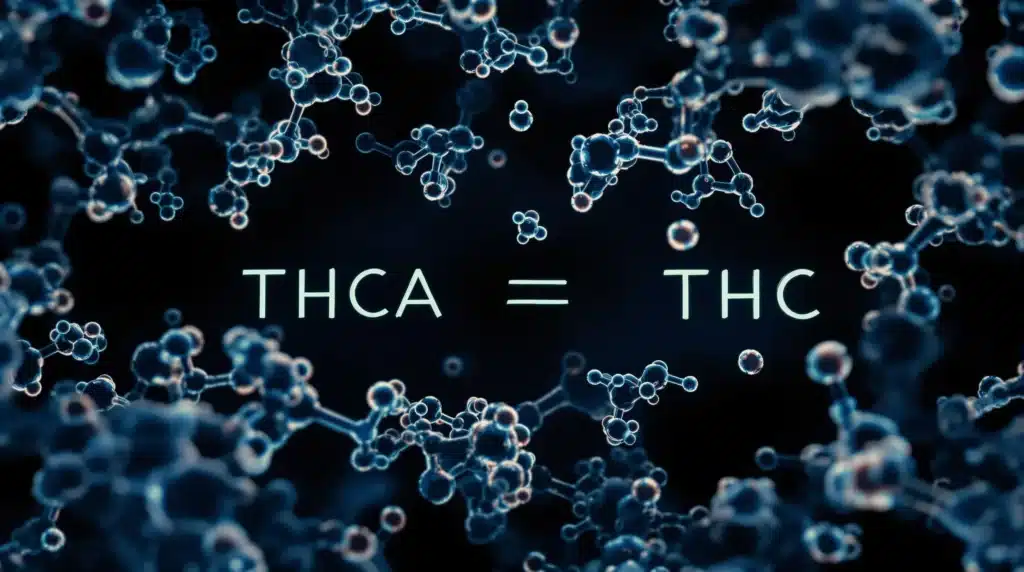
Formula for Estimating THC Content
Calculating THC content based on THCA levels involves a straightforward formula. By multiplying the THCA content by 0.877, users can estimate the total THC present after decarboxylation. This calculation is helpful for individuals looking to determine the strength of cannabis products, particularly edibles, where THC potency can significantly affect the experience.
THC Content = THCA × 0.877
For example, if a product contains 20% THCA, its approximate THC content after decarboxylation would be 17.54%. This estimation is useful for consumers who wish to tailor their intake according to specific needs, whether for relaxation, focus, or pain relief.
Calculating THC content using this method also benefits cultivators and manufacturers, enabling them to label products accurately and ensure a consistent experience for consumers. As cannabis becomes more widely accepted for therapeutic use, reliable THC potency information is essential for safety and satisfaction.
Factors Influencing THCA Conversion Rates
Temperature and Time
Both temperature and time are crucial in determining how much THCA converts to THC. Generally, temperatures between 220°F and 230°F over a 30–45 minute period yield optimal results, as this range allows for effective decarboxylation without degrading too many cannabinoids. Lower temperatures, when applied over extended periods, can also convert THCA but with a reduced risk of terpene loss.
When temperatures exceed 300°F, the risk of THC degradation into CBN increases, reducing the psychoactive potential of the final product. Therefore, controlling temperature and time helps maintain potency, flavor, and aroma, creating a well-rounded cannabis experience.
Moisture Content
Cannabis with high moisture content can lead to uneven heating, impacting the efficiency of THCA-to-THC conversion. Proper drying and curing of cannabis before decarboxylation can ensure consistent heating, leading to a more complete conversion. However, overly dry cannabis may burn easily, leading to excessive loss of cannabinoids and terpenes.
Managing moisture content can improve the overall quality of the decarboxylation process, especially for edibles where precise THC levels are desired. Balancing moisture prevents burning, ensuring both potency and flavor are retained in the final product.
The Impact of spray Terpenes on Conversion
spray Terpenes contribute to the flavor, aroma, and potential therapeutic benefits of cannabis. However, they are sensitive to heat and can evaporate at lower temperatures than cannabinoids. When aiming to preserve terpenes during decarboxylation, using a moderate temperature (220°F to 230°F) helps to balance cannabinoid activation and terpene retention.
Preserving terpenes adds to the entourage effect, where cannabinoids and terpenes work synergistically to enhance each other’s effects. As terpenes play a significant role in the overall cannabis experience, their preservation during decarboxylation is often prioritized by cannabis enthusiasts seeking a more holistic effect.
Methods for Converting THCA to THC
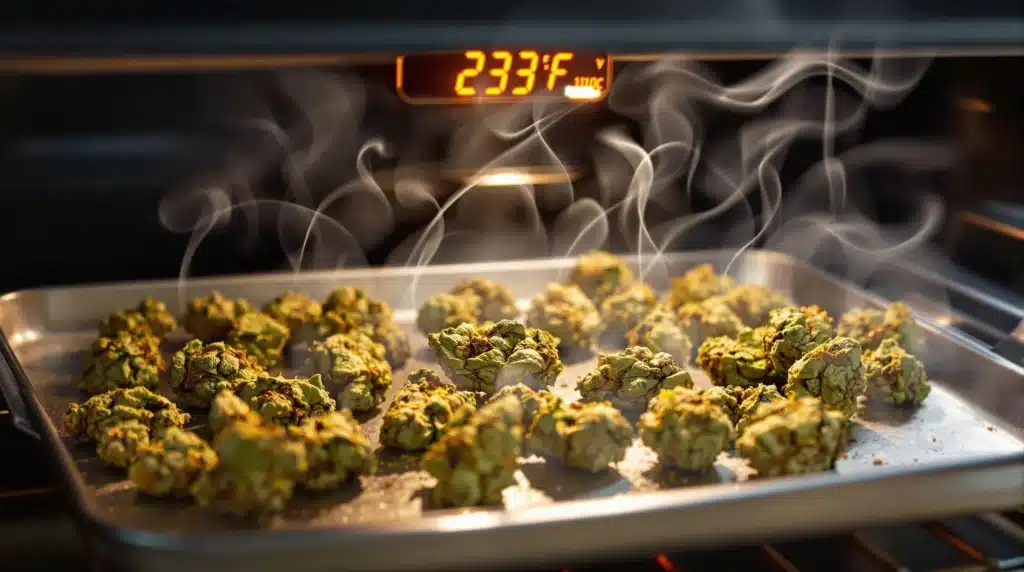
Smoking
Smoking is one of the most widely used methods for converting THCA to THC. The intense heat from combustion causes immediate decarboxylation, producing nearly instant effects. However, this method is less efficient than others, as some THC is lost in the high temperatures, and there is limited control over the exact decarboxylation process.
Smoking is less predictable than other methods, which may be a drawback for those seeking precise effects or medicinal benefits. Despite this, smoking remains popular for its quick onset and simplicity, making it ideal for recreational use where fast-acting effects are desired.
Vaporization
Vaporizing offers greater control over the temperature than smoking, allowing users to set a specific range for efficient THCA-to-THC conversion. Most vaporizers can be adjusted to maintain temperatures between 220°F and 230°F, ideal for converting THCA while preserving terpenes. This method minimizes THC loss and delivers a smoother experience compared to smoking.
Vaporization is an appealing choice for both recreational and medical users who value a more refined cannabis experience. The flavor profile of vaporized cannabis is often more pronounced, as terpenes remain intact at lower temperatures, adding depth to the experience.
Baking
Baking is an efficient method for decarboxylating cannabis for edibles. It allows for precise temperature and time control, ensuring a complete THCA-to-THC conversion. When baking cannabis, an oven temperature of around 230°F for 30–45 minutes is recommended. This slow heating method allows for terpene retention, creating edibles with a robust flavor and predictable potency.
This method is ideal for creating cannabis-infused oils or butter, which can be used in various recipes. Baking is popular among those who prefer ingesting cannabis over inhaling it, as edibles provide a longer-lasting and often more intense experience.
Sunlight Exposure
Though less efficient, sunlight can cause a gradual conversion of THCA to THC. This method relies on prolonged UV exposure, which breaks down THCA into THC over time. However, UV rays and oxygen exposure also degrade THC into CBN, making this approach unpredictable for achieving high THC potency.
Sunlight exposure is not commonly recommended for decarboxylation, but it may appeal to those seeking a low-tech method or experimenting with natural options. This process is best suited for those who prefer subtle effects and do not require precise THC levels.
THCA to THC Conversion in Cannabis Products
Flower and Concentrates
Cannabis flower is rich in THCA before being exposed to heat. When the flower is smoked, vaporized, or baked, THCA converts to THC, producing psychoactive effects. Concentrates, such as waxes and oils, also contain high THCA levels and convert during consumption, especially when dabbed at high temperatures.
Analyzing THCA content in flowers and concentrates helps consumers estimate the final THC level, enhancing control over their experience. Concentrates are particularly potent, making accurate decarboxylation essential for consistent results.
Edibles
Edibles require precise decarboxylation to achieve accurate dosing. During preparation, cannabis is typically baked at low temperatures to ensure full conversion of THCA to THC before being infused into oils, butter, or other edible bases. Properly decarboxylated edibles can deliver a controlled and intense effect, depending on the THC content.
For those seeking medicinal benefits, edibles provide a reliable method to obtain a steady dose. Analyzing THCA-to-THC conversion in edibles enables consumers to manage their intake and achieve desired effects safely.
Tinctures
Cannabis tinctures can be made using raw or decarboxylated cannabis. When made with raw cannabis, tinctures contain THCA, which offers non-psychoactive benefits such as anti-inflammatory and neuroprotective effects. Decarboxylated tinctures, however, contain THC, delivering psychoactive effects when consumed.
Tinctures provide flexibility, allowing users to experiment with THCA and THC to suit their needs. Analyzing the conversion in tinctures helps individuals select products with appropriate cannabinoid profiles for targeted effects.
Tips for Maximizing THCA to THC Conversion
- Control the Temperature and Time: Optimal conversion occurs at around 220°F–230°F, over a duration of 30–45 minutes. These settings ensure the THCA converts to THC without excessive terpene loss.
- Use Even Heating: Uniform heating prevents some areas from overcooking, ensuring consistent decarboxylation. Using parchment paper or similar methods can help achieve this consistency.
- Consider Moisture Levels: Moderately dry cannabis allows for more controlled heating. Avoid excessively dry or moist material to prevent burning or uneven heating.
- Avoid Overheating: Temperatures above 300°F risk THC degrading into CBN, which can cause a loss of potency. Stick to moderate temperatures to preserve THC and the overall cannabinoid profile.
FAQs About THCA to THC Conversion
What is the ideal temperature for converting THCA to THC?
The ideal temperature range for decarboxylating THCA into THC is generally between 220°F and 230°F (104°C to 110°C). At this temperature, THCA efficiently converts to THC while minimizing terpene loss, preserving the flavor and therapeutic properties of the cannabis. However, different temperatures may be used depending on the desired outcome, with some consumers opting for lower temperatures for a more terpene-rich experience.
Does THCA have therapeutic benefits without converting to THC?
Yes, THCA is believed to have unique therapeutic properties, even in its non-psychoactive form. Research suggests THCA may have anti-inflammatory, antiemetic, and neuroprotective effects, making it valuable for certain medical applications without the psychoactive impact of THC. This allows users to potentially benefit from cannabis without experiencing a “high,” which is especially useful for those sensitive to THC or for patients requiring high doses without psychoactivity.
Can I convert THCA to THC without heating?
Yes, THCA can convert to THC over time through slow exposure to sunlight or aging. However, this natural conversion process is significantly less efficient and slower than heating methods like smoking or baking. Sunlight exposure can also degrade THC, so while this method can work, it is not ideal for achieving high potency or a predictable effect.
Does decarboxylation affect CBD?
Yes, decarboxylation also applies to CBD, converting CBDA (cannabidiolic acid) into CBD, which activates its therapeutic properties. Like THC, decarboxylated CBD becomes more bioavailable and effective. The process is similar to THC, involving exposure to heat to activate CBDA into CBD for potential benefits, including relief from anxiety, inflammation, and pain.


